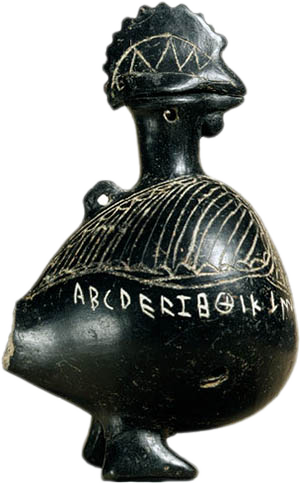Andrea Gigliucci stamps his pipes with the letters "R", "S", "O" or "F" to
indicate the finish of a pipe (Rusticated, Sandblasted, Bird eyes, Flame grain). Their repetition
(1 to 3 times) gives the grade.
The originality of these markings lies in the fact the letters are not stamped in a Latin
alphabet: he uses an early Etruscan alphabet.

The symbols used by Andrea Gigliucci are marked in red in the next chart.
All this is a bit complex as Latin and Etruscan letters do not correspond one to one. Furthermore the symbols changed over time under Greek and Latin influence.
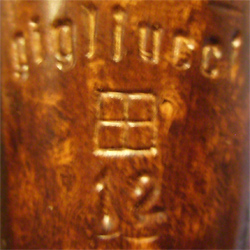 Etruscan
S (sandblasted finish)
Etruscan
S (sandblasted finish)Grade 1: One symbol
Pipe manufactured in 2012
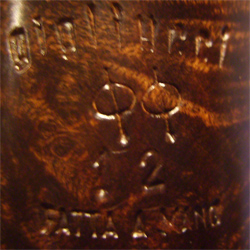 Etruscan
F (Flame grain)
Etruscan
F (Flame grain)Grade 2: Two symbols
Pipe manufactured in 2012
Andrea Gigliucci took his symbols based on a clay tablet from the 9th century BC and discovered in the neighborhood of his village (Caldana [Grosseto]) in 2001.
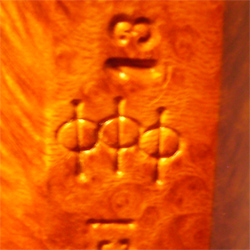 Etruscan
F ((Flame grain)
Etruscan
F ((Flame grain)Grade 3: Three symbols
Pipe manufactured in 2013
The Etruscan language occupies a special place among the early European languages: it cannot be shown conclusively to be related to any other language, living or dead, except perhaps for a couple of extinct languages (Raetic and Lemnian).
That's not to say Etruscan is a "mysterious" language. There exists no problem of decipherment and the texts found on on funerary urns, bronze mirrors, tablets or coins are largely legible.
The issue lies in the difficulty to understand the exact meaning of the words.
